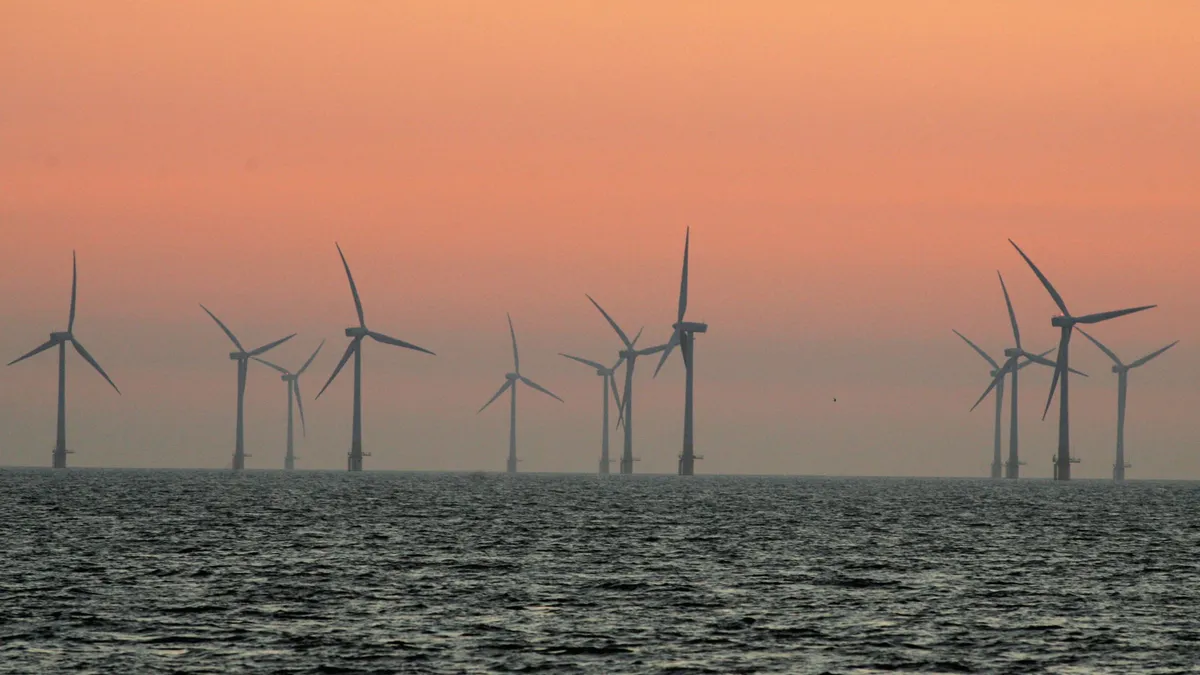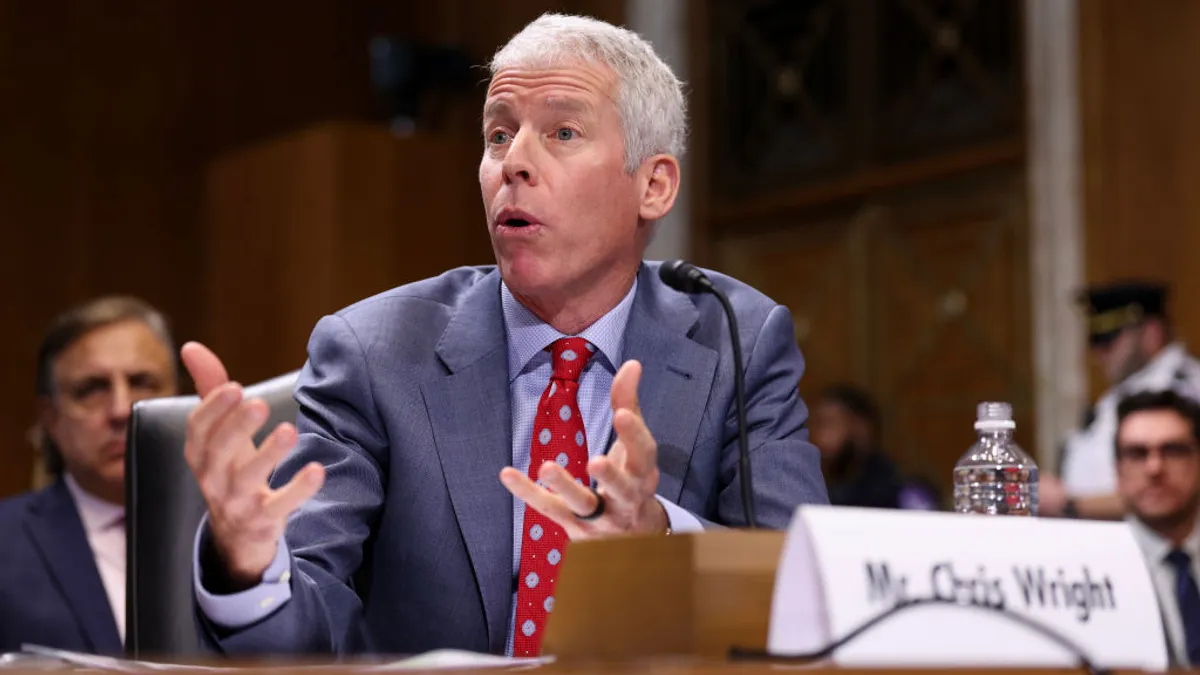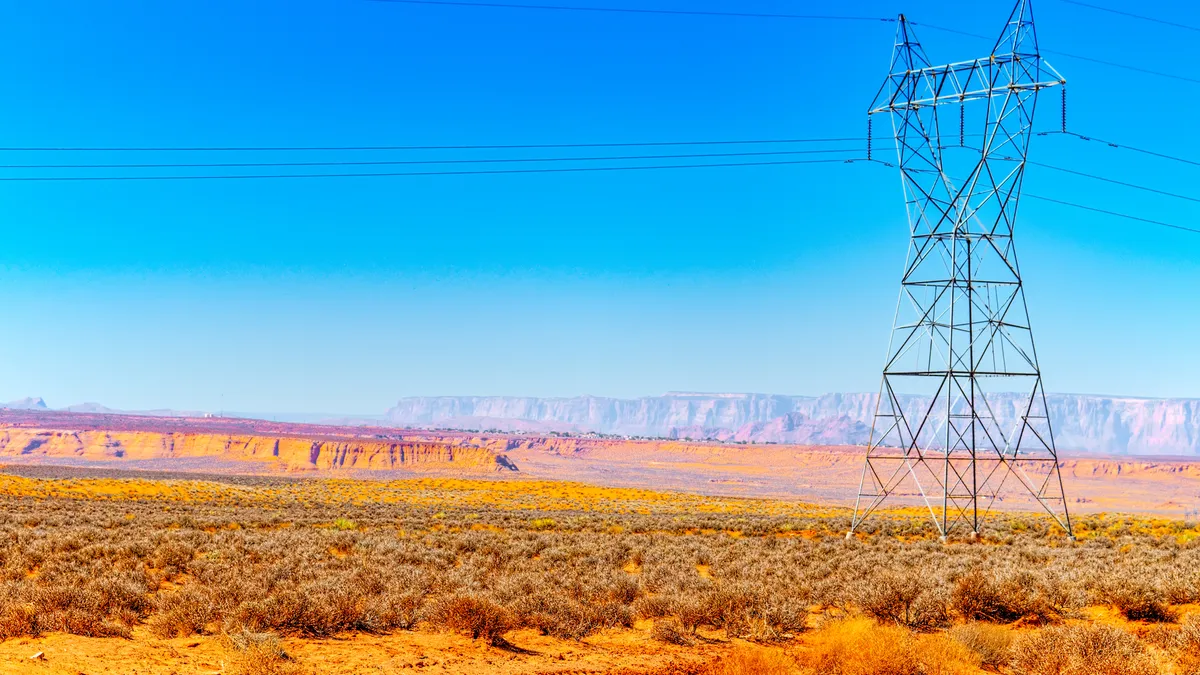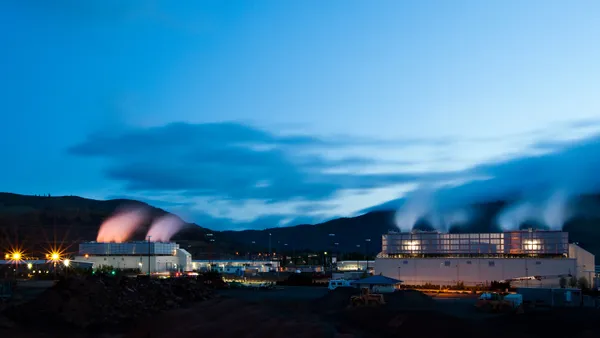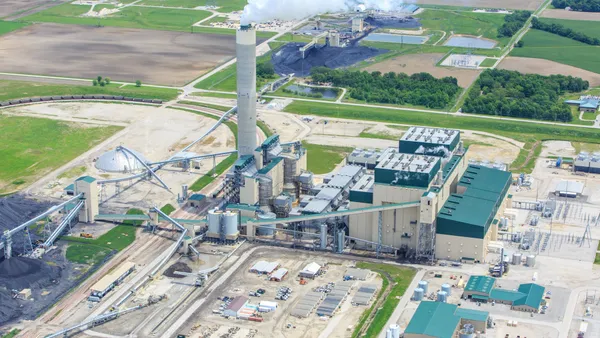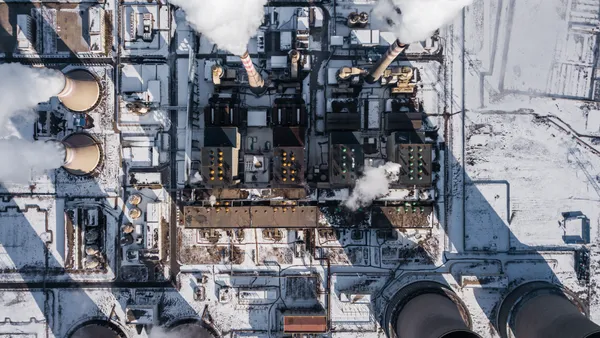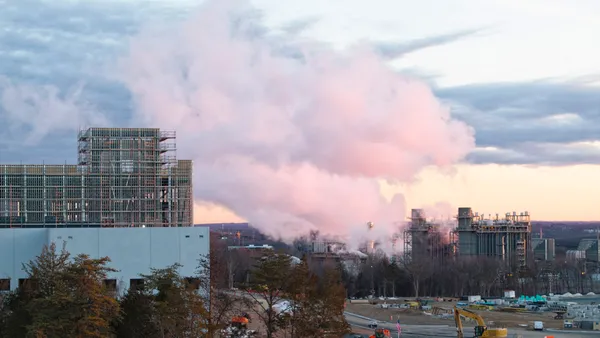Dive Brief:
- New York will have to wait a bit longer before its first offshore wind farm starts generating power as Empire Wind, said it is pushing back its completion date for the 816 MW project by roughly 18 months to the end of 2026.
- In its filing with the Federal Energy Regulatory Commission on Wednesday, Empire Wind, a joint venture between a subsidiary of Norwegian energy company Equinor and BP Energy, cited the ongoing regulatory permitting process and the complexity of offshore construction for the delay.
- The joint venture's request is triggered by the looming ratification of a grid interconnection agreement with the New York Independent System Operator (NYISO), which requires the offshore wind project to start producing electricity for the New York market by June 14, 2025.
Dive Insight:
For offshore wind developers, building a major project miles from land — in Empire Wind's case 14 miles off Long Island — is just one of the challenges they face.
Offshore wind developers also need to win permission from the operators of the region's electric system — in this case NYISO — to connect their project to the grid.
It can be both an extensive regulatory process and an expensive one as well, with Empire Wind, in its federal filing, noting it has posted $42.6 million to "secure those interconnection rights."
The money, in turn, will go towards paying for upgrades to the transmission system by Consolidated Edison, which are needed "to reliably interconnect," the offshore wind developer noted.
Under NYISO rules, the commercial operation date (COD) in the project developer's interconnection agreement, can be no later than four years after the grid operator issues its "facilities study" of the plan, which, in this case, happened on June 14, 2021.
That would commit Empire Wind to having its offshore wind farm up and running by June 14, 2025, a timeline that Empire Wind states it "already knows to be impossible."
In its filing with FERC, Empire Wind states it is seeking a one-time waiver of the NYISO four-year rule, while extending the COD to December 2026.
In explaining why that date is not realistic, Empire Wind pointed to the "expected timelines for receiving action on key permits and governmental approvals, coupled with the inherent complexities of constructing and commissioning New York State's first large-scale offshore wind generating facility."
"The contents of this article do not reflect a change in schedule, but reflect the fact that current regulations do not accommodate the schedules required to build large scale offshore renewables like wind farms. As a result, Equinor’s request for a waiver from FERC was needed to stay in legal compliance with current regulations. Equinor is committed to building Empire Wind and delivering the first power to the State of New York in the most efficient timeline possible," David Marks, head of public affairs at Equinor Renewables US, said.
While Empire Wind does not plan to have its project generate power for the grid by the on meeting the 2025 deadline, the developer said it is prepared to make "substantial investments" by that date in order to ease potential concerns on part of NYISO. Among the investments, Empire Wind will build a substation at Gowanus, lay 40 nautical miles of submarine and underground interconnection cable circuits, install an offshore collector substation in the New York Bight project site.
"This carefully drawn proposal can only be seen as a good faith effort to accommodate the increased time line required by Empire Wind's first-ever major offshore wind generating facility in New York State," Empire Wind states in its FERC filing.
This story has been updated to include a comment from Equinor Renewables US.


